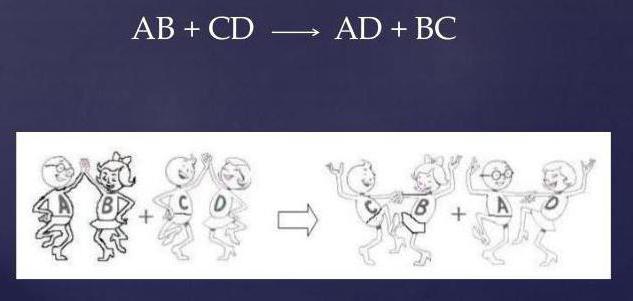The reaction of the interaction of CaCl2, H2SO4
One of the stumbling blocks in the first stepsthe study of chemical regularities and fundamentals is the writing of chemical reactions. Therefore, questions about the interaction of CaCl2, H2SO4 are not even periodically, but systematically. Let's analyze the main "problem" moments.
The record of the molecular equation
The interaction between calcium chloride (salt) and sulfuric acid proceeds according to the exchange mechanism.

- two compounds at the inlet (starting materials);
- two connections at the outlet (products);
- complete absence of simple substances.
By exchanging reaction groups with each other, the reagents are modified, and the equation takes the form:
CaCl2 + H2SO4 = CaSO4 + 2HCl.
As can be seen, two complex substances, changing ions, form completely different compounds: a new salt (CaSO4) and hydrochloric acid (HCl).
Possibility of flowing to the end
You can easily answer this question by writing the reaction equation in molecular form for CaCl2, H2SO4. From the kind of products and everything will depend. Until the end of the process is in the case of education:
- a slightly soluble substance (precipitate);
- a volatile compound (gas);
- low-dissolving reagent (water, weak electrolyte).
In the case considered for CaCl2, H2SO4, among the reaction products there is calcium sulphate, a sparingly soluble compound precipitated according to the table.

Consequently, the exchange process will go to the end.
The reduced ionic form of the recording between CaCl2, H2SO4
Having painted all the soluble compounds on ions and reducing the repetitive reaction groups, we obtain the two required equations:
- the total ionic form of the recording between CaCl2, H2SO4
ca2+ + 2cl- + 2h+ + so42- = caso4 + 2h+ + 2cl-
- the reduced form of equation
ca2+ + so42- = caso4.
It should be remembered that the ions are painted onlysoluble salts, acids, bases (this is easily determined by special tables). Weak electrolytes such as coal or acetic acid are always written in molecular form.
Now you know how the interaction between calcium chloride (salt) and sulfuric acid takes place.

